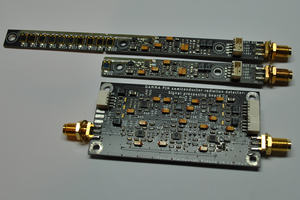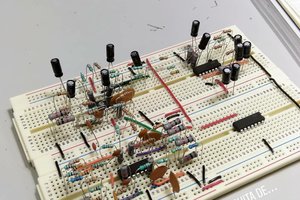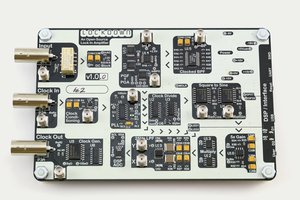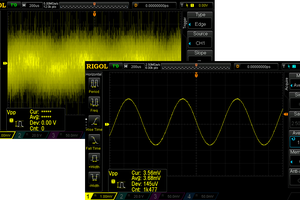Initial success with capturing the ECG signal using hands. Lot of improvements needed, specially base line drift prevention and a 50Hz notch filter.
The main circuit for this system is separated into several stages in order to ensure that retrieving the signal would be safe for the user and that sufficient amplification could be made to pull a readable ECG signal. The first stage is the conditioning stage, which ensures user safety through DC-isolation by connecting the dry electrode signals directly to capacitors and resistors initially. The capacitors help with DC-isolation and provide a DC offset correction while the resistors limit the current passing through. This input conditioning stage is followed by amplification and filtering that yield an output with a high signal-to-noise ratio

Directly after DC isolation, the signal is sent into a differential amplifier, the AD623, and with an RG value of 11 kOhm, an initial gain of 10 is obtained. The AD623 has a low bias current, which allows for the high impedance signal source. The differential amplifier also utilizes a feedback loop which prevents it from saturating. Following the differentiation stage, the signal is passed through multiple filters and receives additional amplification. The first is a low pass filter with a cutoff frequency of approximately16 Hz, this filter is primarily used to eliminate 50 Hz noise. The second filter is a high pass filter with a cutoff frequency of approximately .5 Hz. This filter is primarily used to eliminate DC offset. The total amplification at this stage is 10, and since the noise is now significantly reduced and the signal to noise ratio is large, this amplification produces a very strong and clear signal. With these stages done, the signal is now strong enough to be digitally analyzed.
I am planning to make this as an arduino shield.
 Nitesh Kadyan
Nitesh Kadyan



 Lilia Lobato
Lilia Lobato
 Mark Omo
Mark Omo
 RoGeorge
RoGeorge
How do you expect to "portabilize" this? a single wristband with 2 contacts? two wristbands each with 1 contact?